There’s a timelessness attached to a wood house. It instantly feels welcoming and warm, even from the outside. When designing your new home and selecting your siding, there are many varieties of wood to choose from; it’s a good idea to narrow down your choices based on recommendations from local experts, such as your builder and contractor. Ask which wood types are most readily available to your community, what specific climate or species threats exist that may damage your siding, and what type(s) of wood fare well in your area. To get you started, here is a list of various woods often used for siding.
Hardwood
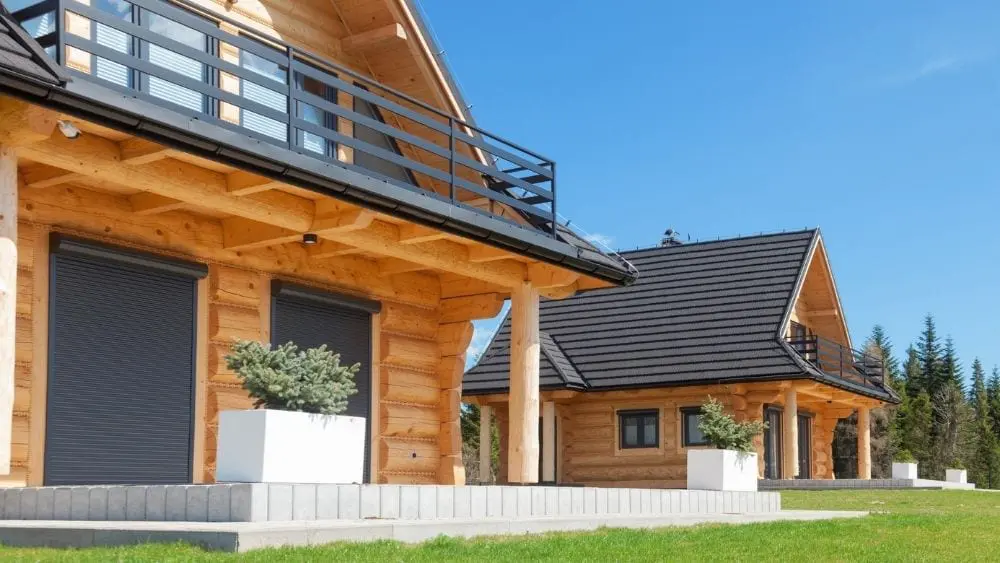
Hardwood comes from angiosperm trees. These species have a higher density and slower growth rate, making them stronger and more expensive than softwood. They often have a more porous and noticeable grain than softwood.
Ash
Ash wood is more common than you might think. It is often used in household furniture and may be available in several different colors. This dense and sturdy wood and holds up well over time. If you choose a lighter color, such as white ash, expect yellowing over time. Price typically varies by color.
Cumaru
Cumaru originates from Brazil and is often referred to as Brazilian Teak or Golden Teak. Its consistent golden-brown color and incredible durability last for generations, but its heavy weight can pose a challenge for transport and installation. Its dark color also tends to absorb heat in the summers, so it may not be suitable for sweltering climates.
Garapa
Thriving in hot climates, Garapa has a distinctive light color that reflects heat in intensive sun exposure. It is naturally resistant to invasive species and decay and is known for its superior durability. Like other high-quality woods, Garapa may be expensive and hard-to-find due to demand.
Iroko
Iroko is known for its vibrant light amber glow and uniformity in color, as well as natural resistance to insects and rot. It is an elegant and highly sought-after material, making it expensive and challenging to find, in addition to being difficult to transport and install.
Massaranduba
This deep-toned, beautifully-textured wood is nicknamed the “Brazilian Redwood” for its status as one of the most durable wood varieties in the world. It has a high longevity, superior strength, and natural resistance to insects and moisture damage. It is on the heavier side, and is typically an expensive variety to come by.
Oak
Oak, both red and white, offer a truly gorgeous finish. It is a popular choice for its stylish appearance, but may not be the best choice for exterior siding in warm, sunny areas as exposure to direct sunlight can cause the lavish color to fade. Red oak tends to be more porous and is usually not suitable for outdoor use where exposure to the elements may lead to rot.
Tatajuba
Tatajuba, native to wet climates in South America, is resistant to rot and invasive species. It is a very dense wood and carries a superior durability. When exposed to the sun and other elements, Tatjuba will rapidly change from a golden color to a dark red-brown. Regular maintenance is important to keep its strength and appearance.
Softwoods
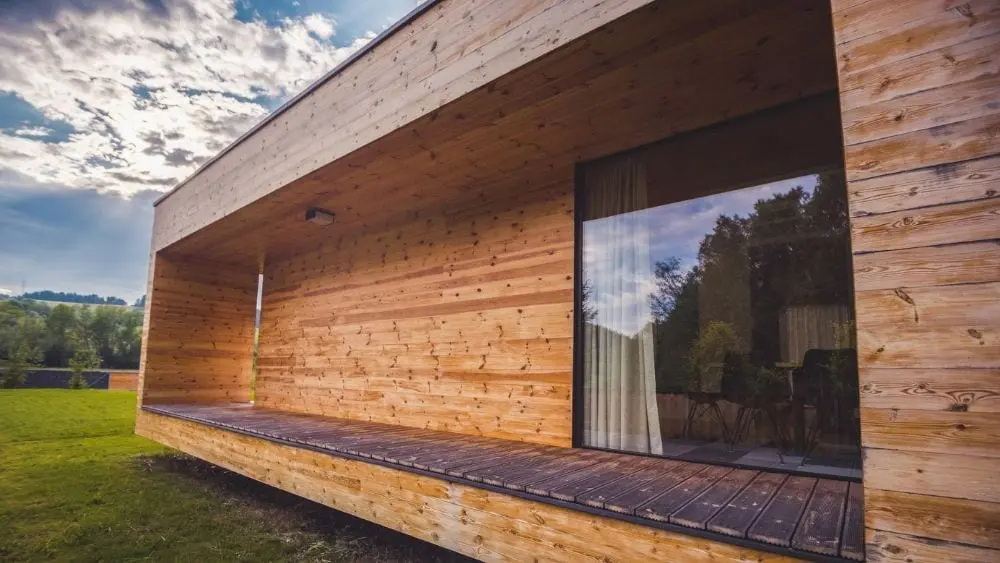
The large majority of wood used for building purposes is made of softwood, which comes from gymnosperm trees. They are much faster-growing, less expensive, more readily-available, and more easily pliable (making them ideal for DIYers!).
Cedar
Cedar is one of the most popular choices on the market for home siding. It is aesthetically appealing and amenable to staining. Resistant to swelling and naturally durable, cedar typically has a longer lifespan than many other wood types as long as it is treated and maintained properly.
Cypress
Cypress wood, another top choice, adds a warm and rustic vibe to the interior or exterior of any home. It is extremely reliable and has been known to last over one hundred years in many historic homes, making it a very cost-effective option (with proper maintenance over time). It may not be suitable for homeowners with certain respiratory diseases like asthma and those with allergies due to risk of irritation.
Douglas fir
Douglas fir is known for its extravagant style and hints of luxury. Its beautiful warm reds and blonde tones give the wood a fine character. Douglas fir is known to be sustainable and hold up well over generations; the tradeoff is its price and high-maintenance to maintain its appearance and value.
Firwood
Firwood is inexpensive, easy to install, and displays a smooth and soft finish. Because it is a softwood, ongoing maintenance is a challenge. It must be well-sealed with quality products for protection against the threat of water damage and/or invasive bugs.
Pine fir
A popular option for its general availability and lower cost, pine fir is ideal for DIYers and first-time home remodels. As a softwood, it is not naturally resistant to moisture and invasive insects, and should be well-treated to avoid rot and damage.
Redwood
Redwood offers a distinct, gorgeous, and unmistakable appearance. It is resistant to shrinkage when exposed to the elements, making it a great choice for many climates. It requires less maintenance than other woods and is naturally insect-repellant. If you live outside of the West Coast, it can be difficult to locate and purchase redwood, and the high demand makes it quite expensive.
Siberian Larch
If you live in a wet or tropical climate, Siberian Larch may be an excellent choice. It is a highly dense wood and naturally resistant to decay from moisture. It has a lovely natural appearance, but may be more expensive when compared to other wood types and difficult to find.
Spruce
Most often found on the East Coast, Spruce is ideal for clapboards and board siding while displaying a similar smooth pine finish. However, Spruce is also vulnerable to moisture and requires extensive time and energy to maintain over time.
Manufactured or Altered Wood
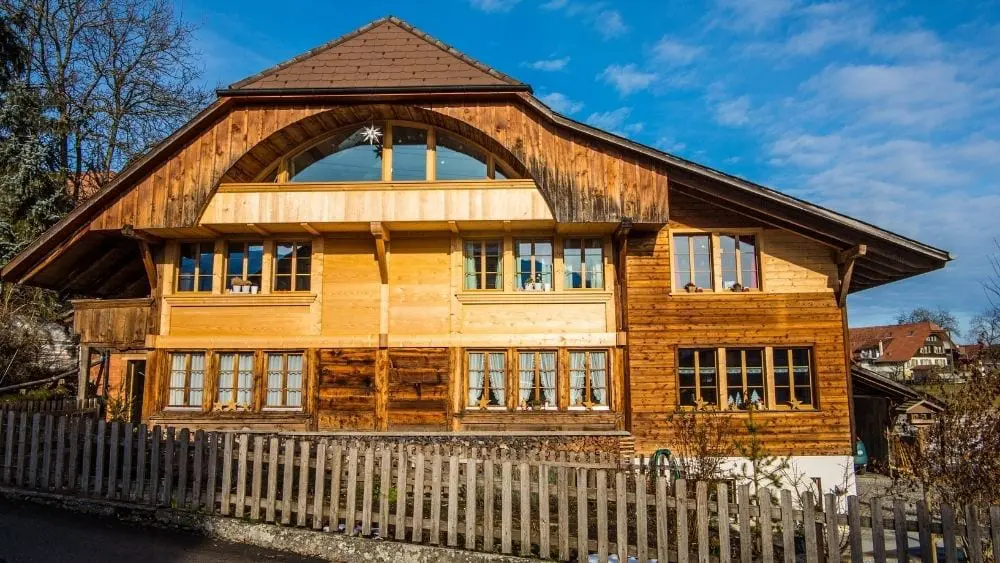
If you have your heart set on a specific type or color of wood only to find out it’s expensive or near impossible to purchase, engineered wood made to look like the genuine material is an excellent alternative.
Accoya
Mostly comprised of Radiata pine, Accoya acetylated wood has been treated to gain incredible performance standards and sustainability with minimal environmental impact. It is extremely durable and holds up well in four-season climates. While it’s an eco-friendly and low-maintenance option, it is an expensive choice of manufactured wood and is relatively challenging to find in most areas.
Charred Wood
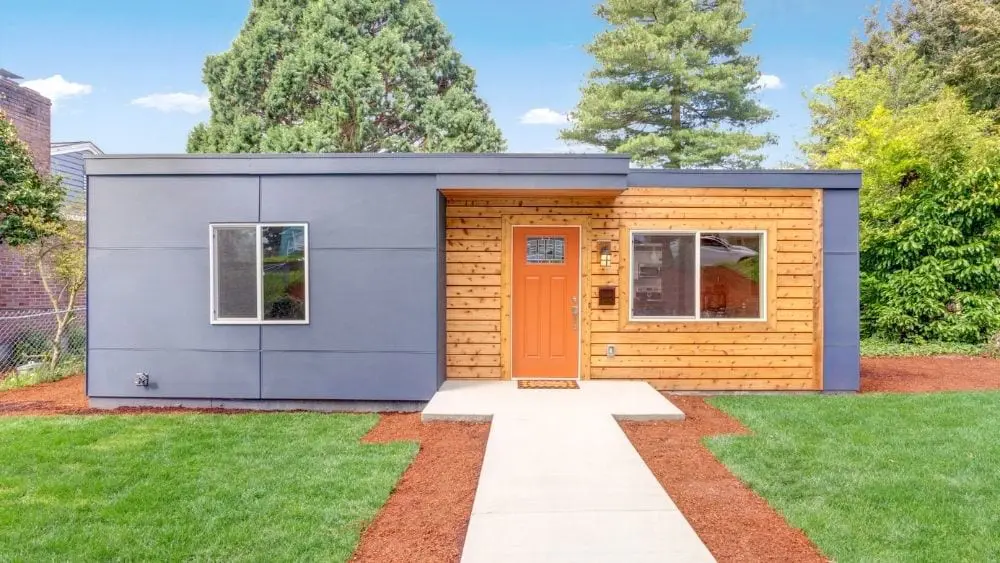
One of the most sought-after types of wood, burnt wood is appealing for its charm and durability. Charred wood looks particularly gorgeous on modern homes, but has been made popular over time on various styles. Charring the board by exposing it to an open flame weatherproofs the wood without weakening it and keeps insects at bay. Homeowners can consider adding an oil finish to maintain moisture resistance.
Engineered Wood
Engineered wood is a manmade alternative to natural materials built to be stronger and more durable while maintaining the appearance of genuine wood. It holds up in various climates well and is at a lower risk of damage from moisture and rot, making it much easier to maintain over time.
Thermowood
Thermowood, also known as heat-treated lumber, is a sustainable wood option easily sealed and protected. It has a beautiful appearance and is produced through a chemical-free process using heat, steam, and water. It’s very resistant to moisture damage and an excellent option for DIY projects.
Design Styles
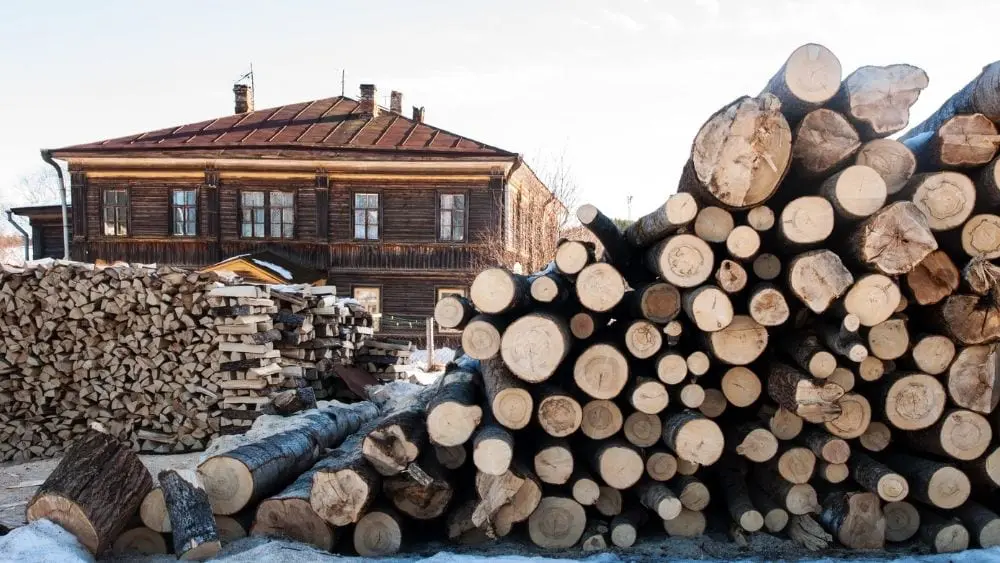
Wood is uniquely versatile and easily manipulated into an entire host of designs and layouts. I love to see homeowners get creative and express themselves through the incorporation of different materials, varied wood types, dynamic pops of color, or distinctive patterns. To get the creative juices flowing, here is a list of the most popular design styles for wood siding and wood types to get you started on dreaming up your new space.
Clapboard
Also known as bevel or lap siding, clapboard siding is a traditional siding style dating back hundreds of years, and is still fairly common and appreciated for its durability. Boards are sawed lengthwise into a very slight pie-shape and then placed in an overlapping layout with the first board on the bottom of the wall.
Clapboards are reliable and shed water sufficiently during rainfall. Contractors are able to choose how much overlap to allow between boards―the greater the overlap, the stronger the structure. This particular style requires the typical regular maintenance for wood, including routine staining or painting. Caulking between boards may also reduce risk of weather damage.
Rectangular Planking
Rectangular planking is similar to the clapboard application, but in this case the boards do not overlap. This results in a cleaner look, but less textured aesthetic. You might see this on modern homes or for use in wood accents.
Board-and-Batten
Another common covering, this traditional siding is installed vertically by applying evenly-spaced wide planks to the prepared wall and nailing narrow wooden strips (known as battens) over the gaps. This allows the wood to expand and contract as needed without damaging the wall. If you want to give your exterior a modern and eclectic vibe, consider using varying widths or colors in your boards and battens to add depth and pattern.
Shingles and Shakes
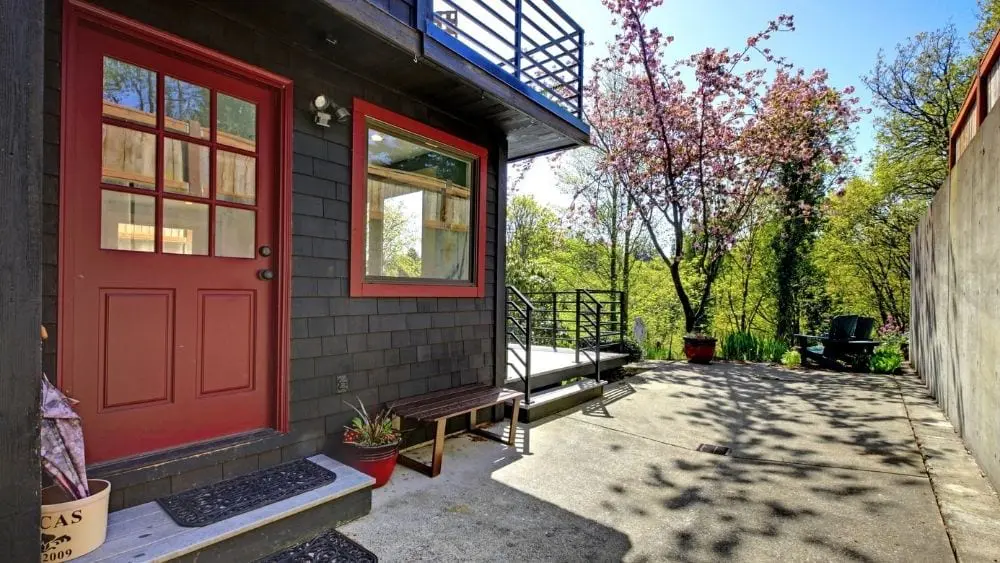
Shingles and shakes are similar in application, but offer very different aesthetics. Wood shingles for siding are popular for their versatility, ease of installation, and consistently smooth appearance. Shingles are ideal for less conventional wall shapes, such as rounded mills or turrets.
Shakes look similar to traditional shingles, but are significantly thicker. They are known for their durability and rougher aesthetic. Unlike shingles, shakes are not of a consistent thickness, and are attached to the sheathing in an overlapping pattern starting at the bottom. Most shakes and shingles are available in redwood or cedar to offer a gorgeous, rustic exterior.
Drop Channel
Drop channel siding creates a rustic appearance and is a popular choice for cabins or country homes. Boards can be installed horizontally, vertically, or diagonally. One length of each plank is milled down, and along the other long edge, a small groove is cut on the bottom of the board. When pieced together, boards form an overlap that displays the fine carpentry without adding a ledge to collect water.
A gorgeous knotty pine or other rough wood is ideal for drop channel siding. The beveled edge and partial overlap make an interesting texture that distinguishes this design from the usual flat siding. Periodic painting, sealing, and washing are required for drop channel siding.
Tongue-And-Groove
Tongue-and-groove siding is one of the most sturdy applications of wood siding. Similar to drop channel, tongue-and-groove is made by milling a groove on one lengthwise edge of a plank and a corresponding tongue on the opposite edge. The tongue and groove interlock to create contact for the entire length of each plank. This method can be designed in a vertical, horizontal, or diagonal direction. It may be applied in a rough or smooth cut and looks best with knotty pine or clear wood.
Split Log
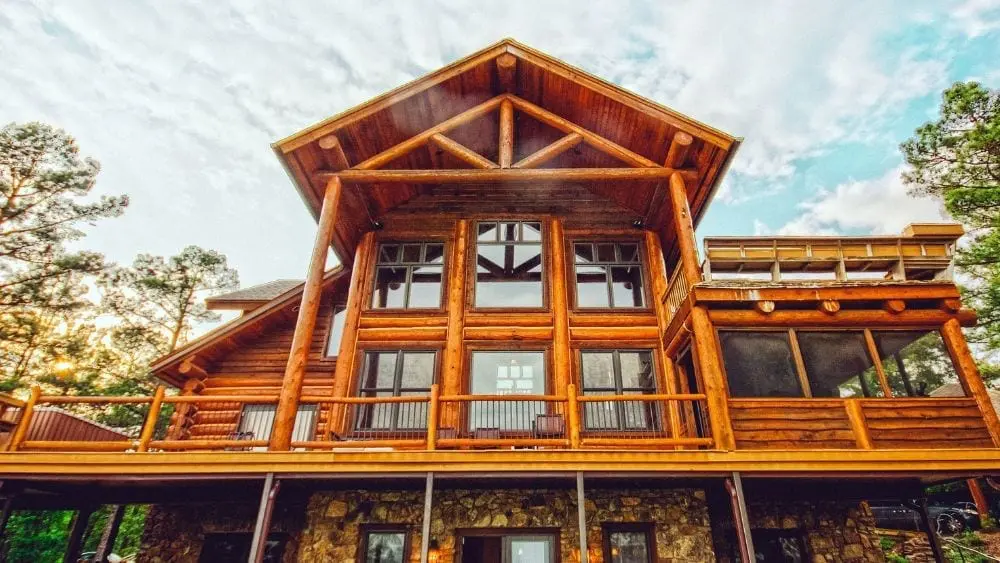
When picturing the traditional cabin in the woods, I always imagine a split log cabin. In woodland settings, these custom-made designs offer a cozy comfort and ease of life. In the popular style, split log siding is made from hardwoods such as cedar, cypress, or oak with the natural bark attached. The sawed section of the log is attached to the prepared wall to create the appearance of solid logs.
Wooden Sheet
Also referred to as composite siding, wooden sheet siding is typically the least expensive option for both materials and installation. You can purchase wooden sheets made of composite wood (such as plywood) and attach them to your prepared walls vertically, horizontally, or diagonally.

Melanie Theriault is a writer, counselor, and lifelong learner. She holds a B.A. in Sociology from Southwestern University, where she discovered her passion for fostering human connection through storytelling.
 3D Printing Houses: The Future of Homebuilding
3D Printing Houses: The Future of Homebuilding